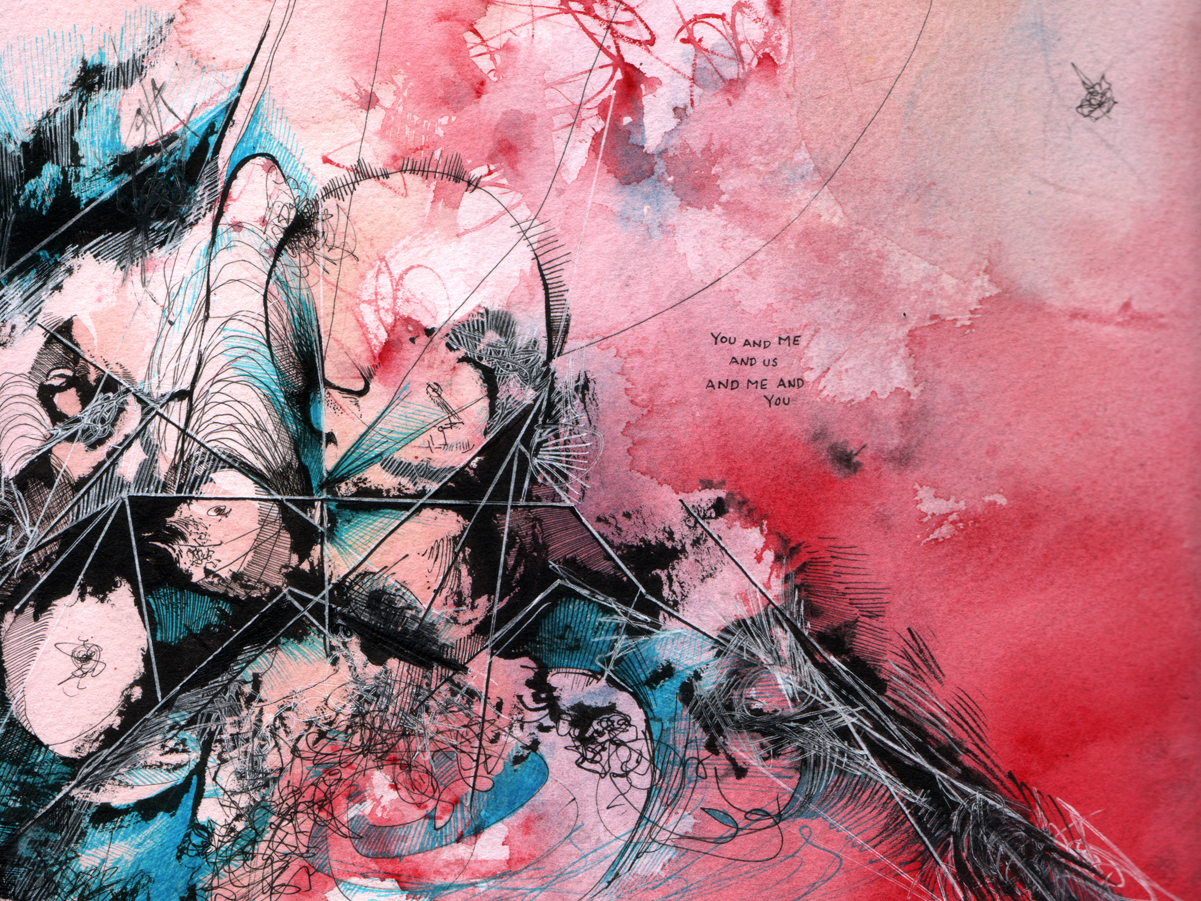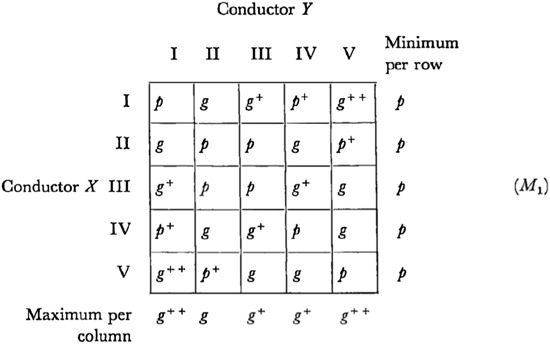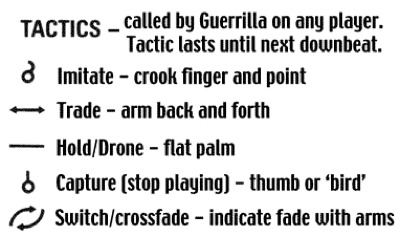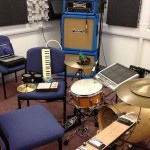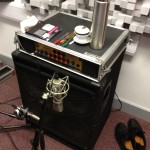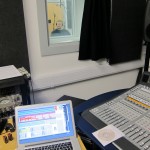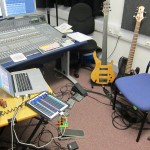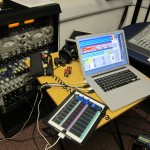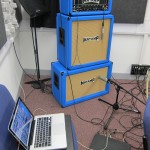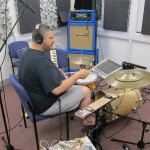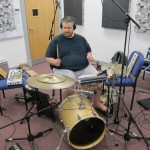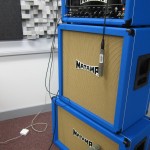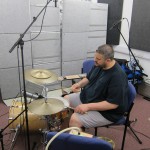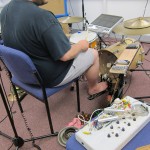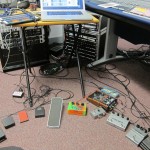Amplifiers & Explosions / play talk play
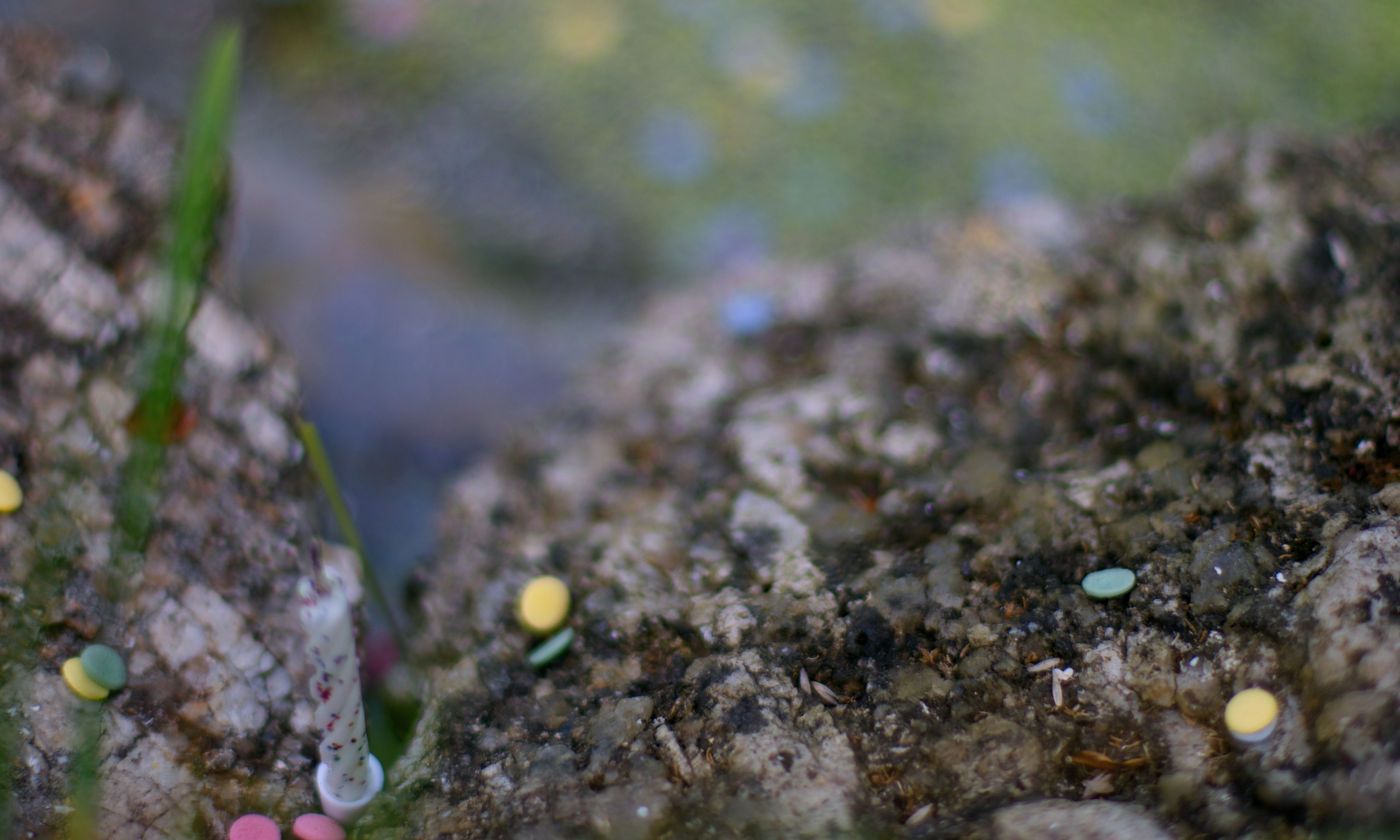
As mentioned in my last blog post, the last few years have been strange ones, with lots of limbo and lots of waiting.
Well one of the more exciting things that I was waiting for was Amplifiers & Explosions, a project, collective, community, and sometimes place which I started with Angela Guyton.
The project is still young and will grow with us over the years, but I am excited to finally be able to get it up and running.
One of the first aspect of Amplifiers & Explosions that I want to share is a series of videos Angie and I have been filming for the last few years. These are called play talk play and they feature different improvisers performer and talking about their improvisation. The idea is to put one of these out a month and the first one is with fantastic vocalist and improviser Audrey Chen.
You and Me and Us and Me and You
I like to picture that there are an infinite number or realities, all running in parallel. The entirety of my existence, everything I have ever known is but one of these. I represent a single point on this infinite line.
There are moments in your life where you feel that infinity collapse. The things, moments, and people that exist across the multitudes of possibilities. These create a mirroring, an echo, a shimmer across these realities. You are no longer you, you are the infinite you. You stand across all time. You see the infinite.
Sometimes you live this without even knowing it.
This is a blog post about infinity. Specifically infinity minus one.
Lights
Here are a couple of performance videos using an approach I’ve just recently started calling Light Vomit.
What you see in the video is a combination of automated processing (via The Party Van/Cut Glove) with a variety of DMX light interactions and behaviors. Everything is controlled from a Max patch I made specifically for the gig (and specifically to test these behaviors), most of which use audio analysis to dynamically record/play/process incoming audio and trigger a variety of light behaviors. (Click here to view my moment to moment analysis of the performance using my Making Decisions in Time improv analysis framework.)
iminlovewithanothergirl.com – Full Length
Very happy to post this full-length version of iminlovewithanothergirl.com. Even though I’ve talked about the piece several times, and have posted multiple versions of it, I didn’t have a full-length ‘studio’ version of it. Until now.
Behold:
It was an interesting experience coming back to a studio version of the piece. The very first version of it (that existed before the idea fully coming together as a composition) was really just a document of the snare/friction/feedback ideas I had been playing with. The lights only really joined in for that document, and then were incorporated into the actual piece, once it started congealing.
Since that video, I’ve performed the piece live numerous times, and each time I discover new facets to the feedback playing, and general language/syntax of the piece, but these generally happen as one-off events. Leading up to the initial composition and studio version I did a boot-camp type working process, where each day I would compose new material, record myself performing it (and previous days materials), improvise freely, and finally listen back to everything. That really helped me refine the language and discover new playing techniques. When I’ve performed the piece live, I did not have that luxury of a long period of prep (at the venue), so I would draw on my existing knowledge, as well as exploring the sonic characteristics of that venue and space. The most recently live performance (at Kammerklang) had some very unique and interesting feedback properties that I hadn’t experienced in other venues before. You can see/hear that video here.
Leading up to this studio version, I prepared by doing daily boot-camp like practice of the materials. In doing some I developed and explored some new sounds and syntax which bring a fresh life now to this now nearly 2-year old composition.
Seeing what came before, and what came after, this piece definitely marks a massive shift in my creative thinking, and still stands as one of the best things I’ve done creatively. (this is still the best)
strikethrough me & you – in the studio
I’ve been working on a duet project (me & you) with Sam Andreae for well over a year now. We started shortly after he moved back to the UK after spending a couple of years in Scandinavia. It started off innocently enough, just as drum/sax free improv. That later blossomed into the idea for Battle Pieces. The idea is simple enough, a kind of challenge/battle/etude where we perform (often) against each other.
In content it is very similar to what I’ve been doing with other recent compositions (.com pieces, Everything., an amplifier) where I compose interaction, behavior, and relationships, instead of ‘content’. In the Battle Pieces the challenges are much more difficult and intense and have forced Sam and I to change/adapt/improve as improvisers drastically.
In December 2013 we decided we had enough of these pieces to go into the studio.
Before I run at the gob some more, here is Glitch Beat from the recording session:
We recorded 8 pieces total, with alternative takes being filmed by Angela Guyton on the second day in the studio.
I’ve become less interested in the idea of “releases” over the years, particularly since I hate getting CDs from people. I do like the art object of a release, which is why many of my releases over the years have been hand-made in one way or another, but even that idea has been waning. This has coincided with my increased video output, not so much as a kind of documentation, but as the thing itself. I do think that me & you is a live band, and we will play many gigs together, but as far as this recording goes, the current idea is to release each track individually, and for free. We’ve talked about eventually putting together a deck of cards with each piece written on each card, so at gigs we can pull out random cards and have our set determined that way, but we need to write many more pieces before we are at that point.

If the background looks familiar, it is because it is in the same studio where I recorded a follow up album with PA Tremblay in 2012. Due to PAs busy schedule, the recording is still in post, but it’s a doozy, and should hopefully be out in 2014.
My setup is equally stripped down, just being a 3-piece acoustic kit with 2 cymbals (1hat, 1ride), but after moving down to just a 2 piece setup, I’ve decided to add a single small (tiny) tom to complement the setup. I find that with me & you in particular, the alternate color of the tom works really well.
Here is one of our newer pieces, Flurries:
This piece is quite a departure for us in terms of sound world, but we’re both very happy with it. It was composed a couple of weeks before going into the studio, and the interactions were only finalized in the last rehearsal before the studio.
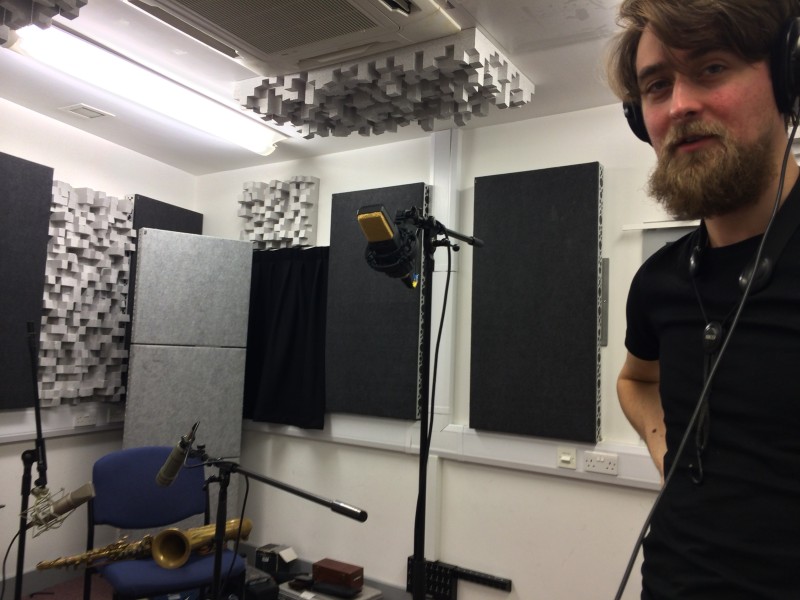
We have not finished ‘notating’ most of the pieces, which requires careful consideration of the wording, but here are 5 of the scores.
.com pieces
The .com pieces are a series of pieces I started in early 2013 which are centered around snare drum feedback and form/memory as composi(/improvisa)tional material. So far I have finished two of them, iminlovewithanothergirl.com (for snare, microphone and DMX lights) and ialreadyforgotyourpussy.com (for amplified wind instrument and amplified snare). The third and final .com piece is in the sketching stages and is as of yet untitled.
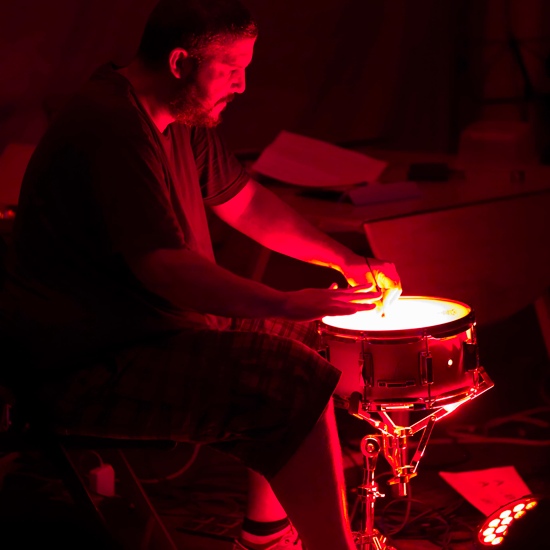
photo by Nick Rutter
strikethrough me & you – Battle Pieces

“Don’t hate the playa, hate the game.” — Ice-T
The Battle Pieces are a series of pieces composed, and performed, with Sam Andreae (as strikethrough me & you) which focus on complex games, improvisational etudes, and competition. The idea for the Battle Pieces came about during a rehearsal of a free-improv duo we had been developing where we decided we wanted to expand on what we were doing together, while still retaining improvisational freedom. This eventually took the form of the Battle Pieces. Essentially each Battle Piece is a game, but beyond being an improv game, it is also competitive, and generally deals with an aspect of improvisation that we want to explore further and/or improve on.
///////////////////////////////////////////////////////////////////////////////////////////////////////////////////////////////////////////////////////////////////////
Battle Pieces
So before I get into the Battle Pieces, it’d be foolish not to start with a yo momma joke.
Yo momma is soooo bad at improv endings that…
strikethrough me & you is a duo with Sam on tenor sax and me on drums. We had each been working on setups that involved solo improv on electronically augmented instruments but wanted to explore something using only stripped-down acoustic instruments. We initially began with just free improv, but during the compositional process of iminlovewithanothergirl.com Sam and I began testing out some of the formal materials (A/B/C pages) from that piece in a duo context. Some of the motivation to do this was to move away from the established canon of tenor sax and drums in free jazz. Those instruments just screamed “FREE JAZZ!” And as we all know, jazz is stupid. This exploration led us to expand and exaggerate the challenge/etude nature of iminlovewithanothergirl.com until the point that it became a competition – a battle.
This led to the idea of a “Battle Piece”: a musical game/challenge where winning and losing had material consequences in the piece. Much like in iminlovewithanothergirl.com, the actual content is not prescribed in any way. In these, the interaction is the composed material of the pieces. It is the idea of interaction as content.
The implementation of game theory in music has a history. Xenakis‘ implementation of game theory in pieces like Duel, although groundbreaking, lacks legibility in terms of the audience perceiving the actual interplay composed into the piece. The mechanics of the piece are primarily focused on balancing the zero-sum characteristics of matrices rather than aesthetics or non-mathematical interplay (Xenakis 1971). That isn’t to say that legibility (of the rules) is terribly important in Battle Pieces, but even the more complex methods of interaction produce legible artifacts, primarily in the form of visible emotion. Much like how it is not necessary to understand the rules of an unfamiliar sport in order to enjoy the game in some manner, the mere fact that there is visible interaction produces a kind of legibility which can be appreciated on its own merit. As Sam put it, “If we work hard enough on the interactions themselves so that we’re clear in them–clear on what our roles are–then it should generate quite strong musical results regardless of whether we tell people how we’re doing it” (Andreae 2013).
The general approach used in Battle Pieces has more in common with Zorn‘s game pieces than they do with Xenakis’. Zorn says of his motivation to create game pieces, which formed most of his compositional output from the late 70s to the early 80s, culminating in Cobra, that he “wanted to find something to harness the personal languages that the improvisers had developed on their own” (Duckworth 1999). So the solution for him was “to deal with form, not with content, with relationships, not with sound” (Duckworth 1999). This idea of relationships, or interaction, is a central concern in the Battle Pieces.
Although I was not directly inspired by the work of Christian Wolff, there is some similarity to the tension and confusion he worked with in his ensemble pieces of the 50s and 60s. Wolff’s use of relational notation, instructing performers to begin before/after a sound they have heard, or play a sound lower/higher in pitch to an existing note, gives the music a sense of immediacy and tension that would not be possible to arrive at another way. Even the pacing of the music is affected by these types of ‘games’, or more simply put by Philip Thomas (a long-time performer of Wolff’s music), “confusion is [used as] a rhythmic device in Wolff’s music” (Thomas 2014).
All Battle Pieces are composed collaboratively during rehearsals, with both of us contributing to the concepts, gameplay, rules, and mechanics of each piece. Although some close friends have tried the pieces out, they are meant to be performed only by Sam and me. The identity of each piece is made up of not only the rules/game/instructions and the type of material we improvise around, which can evolve over time, it is also made up of our personalities. As musicians, performers, and human beings, our personalities and general sense of play make up a big part of the Battle Pieces’ identities.
The core ideas for many Battle Pieces emerge from discussions following free improvisations during strikethrough me & you rehearsals. We sometimes end up finding something about the improvisation that could have been better and link that to tendencies or behaviors that we have as improvisers/performers. This leads to the creation of a piece, or pieces, that tackles that specific aspect of improvisation (endings, space, synchronicity, memory, density, etc.). Through learning, rehearsing, and performing those pieces we improve on the improvisation skills that we had originally found lacking. This process often leads to pieces becoming obsolete as they are no longer challenging or have become part of our general improvisational language and skill set, making the conception/composition/performance/obsolescence of Battle Pieces a microcosm of the feedback loop and intertwinement of my general practice.
The scores that we play from are the instructions for the pieces scribbled onto A4 sheets of paper, as can be seen in the sketches included with each commentary. Since we write the pieces for ourselves there is no need to create thorough notations for each piece, but rather, we jot down a compact set of instructions that we can quickly read to remind ourselves of the rules of the game. A long-term goal, once we have 78 compositions, is to have the instructions for each piece printed on Tarot cards, so that we can shuffle them and pull out cards (pieces) at random during a performance.
In the next section I will present the instructions, sketches, videos and recordings, along with explanations of the instructions, compositional thinking, and performative insight, of the following Battle Pieces:
- yo momma – the creation and baiting/trapping of improvisational endings
- glitch beat – variation/exhaustion, internal/external learning, and repetition
- flurries – spectromorphological acoustic sound masses with fixed compositional elements
- switches – unison playing with encoded/decoded musical information
- eat, eat everything – memory, special events, and in/out/frozen time performance
- sausage fest – space, silence, trajectories, and collective gesture playing
- strains – rock, paper, scissors meets polyrhythmic memory games intertwined with improv
- elbows – the creation of rapid shifts in musical material
- AB(B)A – discovering and transplanting a spontaneous musical games
- pop song – repetition, memory, and form in a freely improvised context
A Greater Horror – Debut EP release
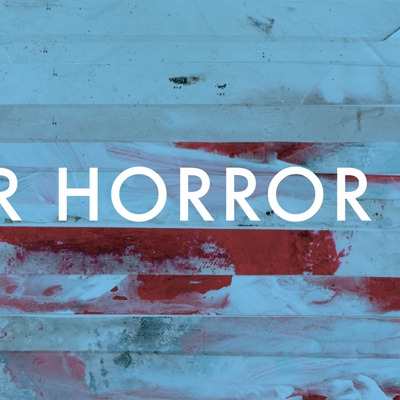
So here it finally is. The post-jazz trio that I’ve been working on with Mauricio Pauly and Alex Tod (A Greater Horror) has finished our debut EP. As always the artwork is by Angela Guyton though this time we’ve gone with a commercially duplicated full-color sleeve type thing.
I’ve very happy with the integration of my software The Party Van into the recording, as all of these tracks were getting gigged before I had even started programming again. You can see/hear more of it in action with the live video we made a bit ago by clicking here.
You can listen to, or buy a download of physical copy of the EP on the bandcamp page here:
In the studio
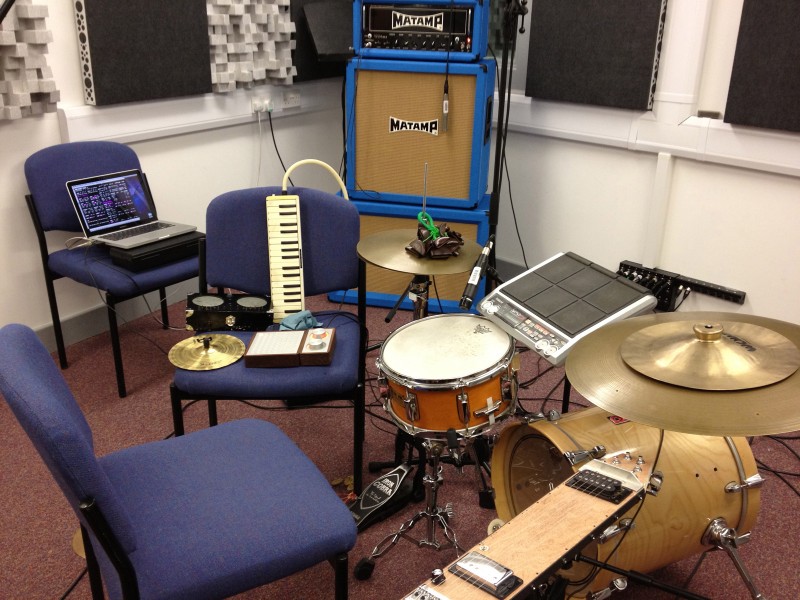 Spent the last three days in the studio with Pierre Alexandre Tremblay for our second album together. Some crazy amazing stuff. I’m very much looking forward to this one coming out. If all goes well it should be later this year.
Spent the last three days in the studio with Pierre Alexandre Tremblay for our second album together. Some crazy amazing stuff. I’m very much looking forward to this one coming out. If all goes well it should be later this year.
As you can see in the photo The Party Van is in effect, along with Old Mr.Grassi, the Specty, and my monome/arc.
A Machine – New fixed media composition
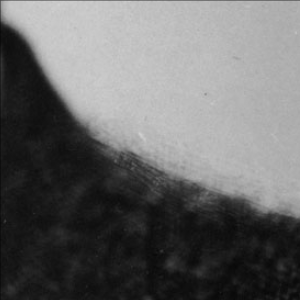
Finished a new piece a couple of days ago. This one was quite difficult as it required me to work in a very different way than I normally compose.
First, here is the piece:
New(ish) Trio
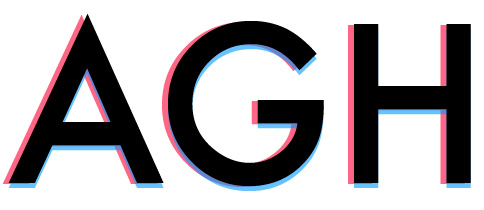
New project.
A Greater Horror
It’s a trio of piano, electric (fretless) bass, and drums.
Sort of post-jazz meets math-rock meets contemporary classical meets electronics.
New Duo Recording Session

After meeting and playing with Hervé Perez back when The Noise Upstairs’ Sheffield night started in early 2010 we got to talking about doing a recording together. It took a bit to work out the logistics of when/where and all that, but we finally got in the studio and recorded a doozy.
I played toy piano, Specto, Party Bus, Sidrassi, modified CD-player (ala Nic Collins), iPad (using Grid, Curtis and TOPLAPapp), Namasitar, and some misc percussion.
On The Horizon

So many many exciting things in the works. I will list some of them, in no particular order.
A trio record with Ray Evanoff (of Atemnt) and Iain Harrison that has been recorded and is in the process of being mixed.
A solo Drum/Keyboard improv record that will be called “P-P-P-Piano, P-P-Percussion”. Some recording done.
A solo album filled with a shmorgishborg of stuff called “Constantly Rodrigo”.
A duo album with Richard Knight on no-input mixer. We are in rehearsals at the moment.
A drum compilation album I was invited to play on. Other performers include Chris Corsano, Glenn Kotch, and Greg Saunier.
I Am Your Density

I am very excited to finally present “I AM YOUR DENSITY”. This CD has been in the pipe for over a year, being sidetracked by Drum & Bass and Jew Point Owe. It is finally done, and it is a doozy.
I AM YOUR DENSITY is a composition written for a group of improvisers. It was written in 2008 and has been performed twice, once at The Noise Upstairs, and the other time at The Arches in Glasgow, in conjunction with the Red Note ensemble. It was recorded in late 2008, and subsequently mixed by Dan Escauriza. It is being released on Noise Upstairs Records. Continue reading »
Drum & Bass: And The Horse You Rode In On
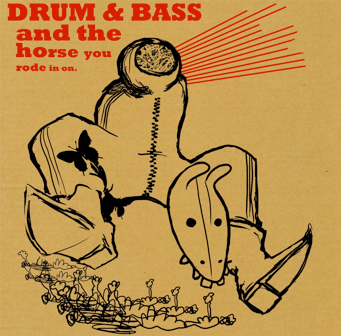
I am very excited to present “Drum & Bass : And The Horse You Rode In On”. This is a duo CD with PA Tremblay that was recorded in early 2009.
We shared a stage in 2008 and after exchanging some e-mails we decided to hit the studio. I showed up at Huddersfield University’s Studio with my ‘drums’ setup. PA had his 6-string fretless bass + Laptop setup, and we let it roll. After months of editing and mixing we carved out this gem. It’s 13 tracks of pure joy. The improvs range from textural laptop-scapes, to grimy stutter-hop, to some smooth jazz, and many other things that I can’t pretend to come up with names for (those above are inadequate enough). Continue reading »



